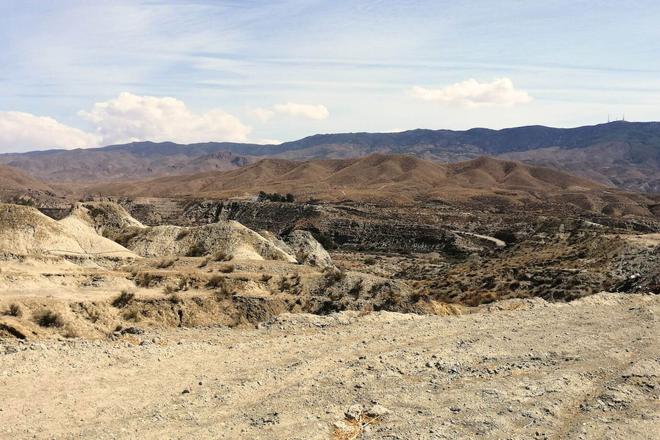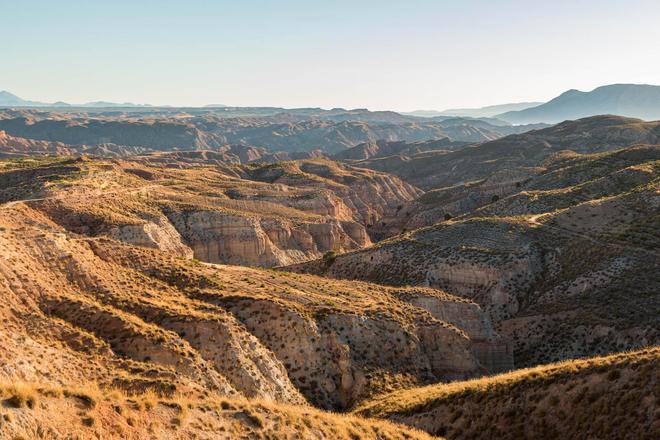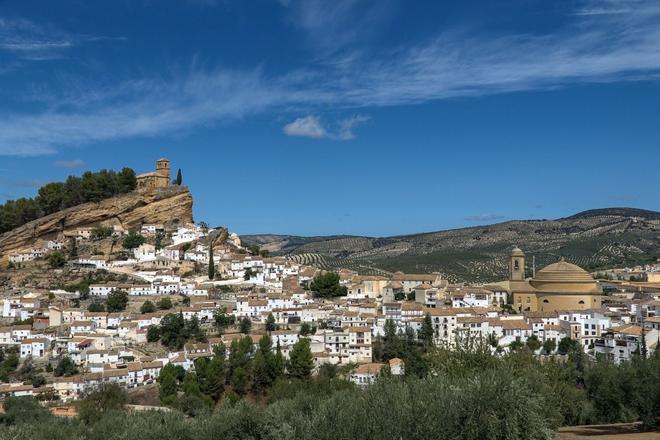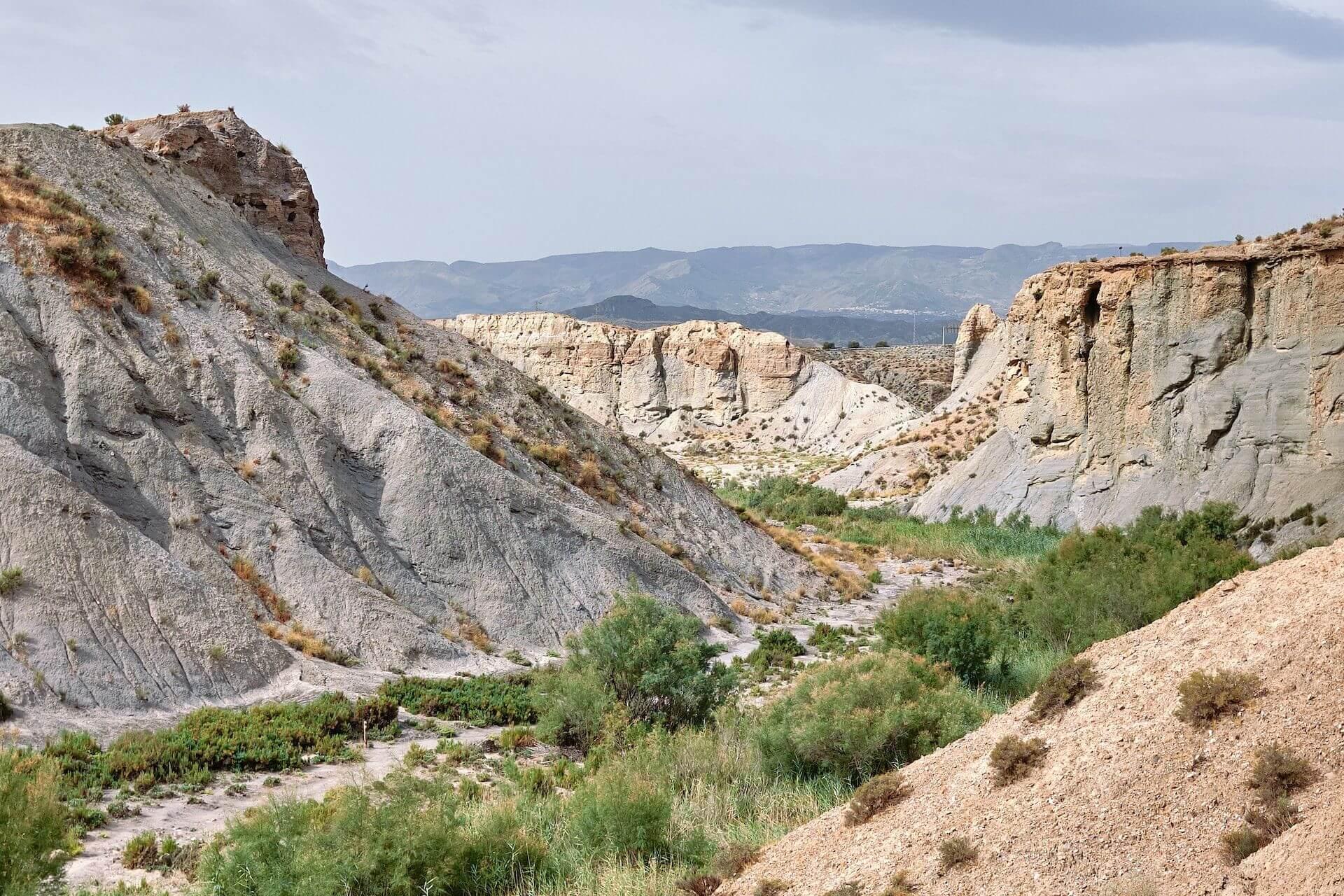What comes to mind when you say Andalusia? Probably great cuisine, the sea and iconic monuments. But you can also head to this region of Spain for nature and exploration. In the Granada Geopark, you'll not only find an impressive landscape full of bizarre shapes, but also a completely unique insight into ancient history. How about soaking up the experience in one of the rock hotels?
An unspoilt landscape within sight of civilisation
The Granada Geopark is only around 50 kilometres from the vibrant provincial capital of the same name. Nevertheless, it is one of the areas least affected by man on the European continent. This is all the more reason why the forces of nature have been at work here for over tens of millions of years. As a result, the park has become a literal paradise for geologists, archaeologists and palaeontologists, and local institutions are working to have it listed as a UNESCO Global Geopark. You can explore the captivating reddish wilderness of deep gorges and canyons, remarkable rock formations and outcrops of ancient rocks on foot or by bicycle or horseback. You will be able to admire it as if it were in the palm of your hand at one of the many viewpoints. The most famous of these is called Fin del Mundo, or the End of the World.

A look into prehistory
For five million years, this basin surrounded by high mountains formed the bottom of a bottomless lake. It became a literal receptacle for sediments and the remains of ancient organisms from all geological epochs from the Triassic to the Quaternary. As a result, a picture of a rich and now extinct fauna has been mapped in remarkable detail. And not only that. The sediments have also yielded valuable insights into the history and life of human settlement from the time of the first hominids, who came to the area around 1.4 million years ago, through the first farmers to the Bronze Age settlement with the oldest mummies on the Iberian Peninsula.
Megalithic buildings and sabre-toothed tigers
At the Río Fardes Palaeontological Centre (La Estación Paleontológica Valle del Río Fardes) near the village of Fonelas, you can get an idea of what the area of today's geopark looked like around two million years ago. Here you'll find fossils of giraffes, rhinos, mammoths and sabre-toothed tigers, raising the question of whether land existed in the past between present-day Gibraltar and the African continent. A similarly well-stocked museum can be found in the town of Orca, where the remains of a settlement more than 1.4 million years old have been found. Among the museum's biggest draws are two sabre-toothed tiger skulls and a pile of broken skulls from which hominids probably ate the brains.
Gorafe is a place of tombs. There is a megalithic park (Centro de Interpretación del Megalitismo) with the largest concentration of dolmens in Europe. They started to be built around 3,000 BC, there are over 240 of them and most of them line the gorge above the river Gor. Together they form 10 necropolises. If you decide to explore the landscape on your own, you may discover the petroglyphs of these ancient builders at Cerro de la Minas. Unfortunately (or fortunately), there is no marked trail to them.

The walk along the Toril Aqueduct near Villanueva de las Torres is only two kilometres long, but interesting nonetheless. This natural travertine aqueduct was dug by humans 3,500 years ago to bring water from a thermal spring to their Neolithic settlement of Alicún de las Torres. Along the way you can spot rock dwellings and dolmens towering directly above the settlement. The thermal spring is still flowing through the aqueduct and the mineral deposits are constantly enlarging it. The warm water has given rise to a unique microclimate suitable for certain types of plants not otherwise found in the area. And beware – you may even get hit by a warm shower!
Life in a modern cave
Rock dwellings are scattered throughout the area. Their history dates back to the 15th-16th centuries, when the Moors took refuge in the area to escape religious persecution. Today you can find hotels, restaurants, wine cellars, Arabic baths and much more. The Tropolis Museum in Alcudia de Guadix has a permanent exhibition that presents the five main elements of the area: bread, wine, cheese, crafts and the troglodytic past.
However, the town of Guadix, at an altitude of 913 metres, is the clear leader in terms of the number of rock dwellings. It is famous for its more than two thousand rock dwellings. Today, about half of the town's population lives in them, with all the modern comforts of course. It is said to be practical – the cave houses maintain a constant temperature throughout the year. They are painted white and the sight of snow-white chimneys sticking out of the golden stone hills is truly impressive. Find tips for more than just this style of accommodation and other sustainable services here.


